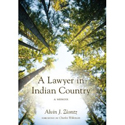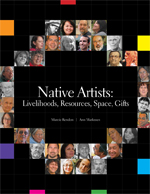Indigenous Arts
Several years ago I attended a meeting of California Indians at the University of California at Irvine. They had come together to discuss tribal sovereignty, but the campus parking regulations quickly shanghaied the conversation. We had been issued parking permits with totally incomprehensible rules, regulations, and instructions. Only one element of clarity stood out: “Improperly parked vehicles will be impounded.” For a half hour some of the best minds in Indian country were tied up trying to figure out where to park, until L.
Read More...2010, 44 pages, Ford Foundation, 320 E 43d St, New York, NY, 10017, 212-573-5000 www.fordfoundation.org
Read More...
2009, 328 pages, ISBN 978-0295989358. University of Washington Press, PO Box 50096, Seattle, WA, 98145, 800-537-5487, www.washington.edu/uwpress

2009, 128 pages. Arts Economy Initiative, Project on Regional and Industrial Economics, Humphrey Institute of Public Affairs, and the University of Minnesota.
Read More...— P. Kingfisher
Based on a series of talking circles of tribal leaders and funders, this handsome report reviews the history of Native peoples and the role of art in tribal culture, examines program priorities of funders, and identifies strategies for supporting Native arts and artists. The extensive bibliography is also a valuable tool for Grantmakers.
Download PDF from The Potlatch Fund.
Read More...Native America at the new Millennium is a Ford Foundation-funded collaboration by the Harvard Project, Native Nations Institute, and First Nations Development Institute that serves as a primer on contemporary American Indian affairs. NANM addresses topics as wide-ranging as tribal government, non-profit organizations, political activism, economic development, housing, welfare, health, arts, and media.
Read More...More than 100 sources were interviewed, consulted, or literature reviewed for information for this study on Native American Philanthropy.
"Native communities have always practiced various forms of giving, from rituals and religious ceremonies to auctions and art fairs." Read on as this study explains how Native American communities have always been involved with, and are increasing their visibility in philanthropy.
Download pdf from Native Americans in Philanthropy.
Read More...First Nations Development Institute and Native Americans in Philanthropy convened a group of Native philanthropic leaders in Minneapolis/St. Paul on September 14 2005, to discuss how we can better support the development of Native foundations and Native philanthropy. The objective of this meeting was to provide insight and input into the design and implementation of a structure to support the further development of Native foundations and Native philanthropy through technical assistance, advocacy and research.
Read More...